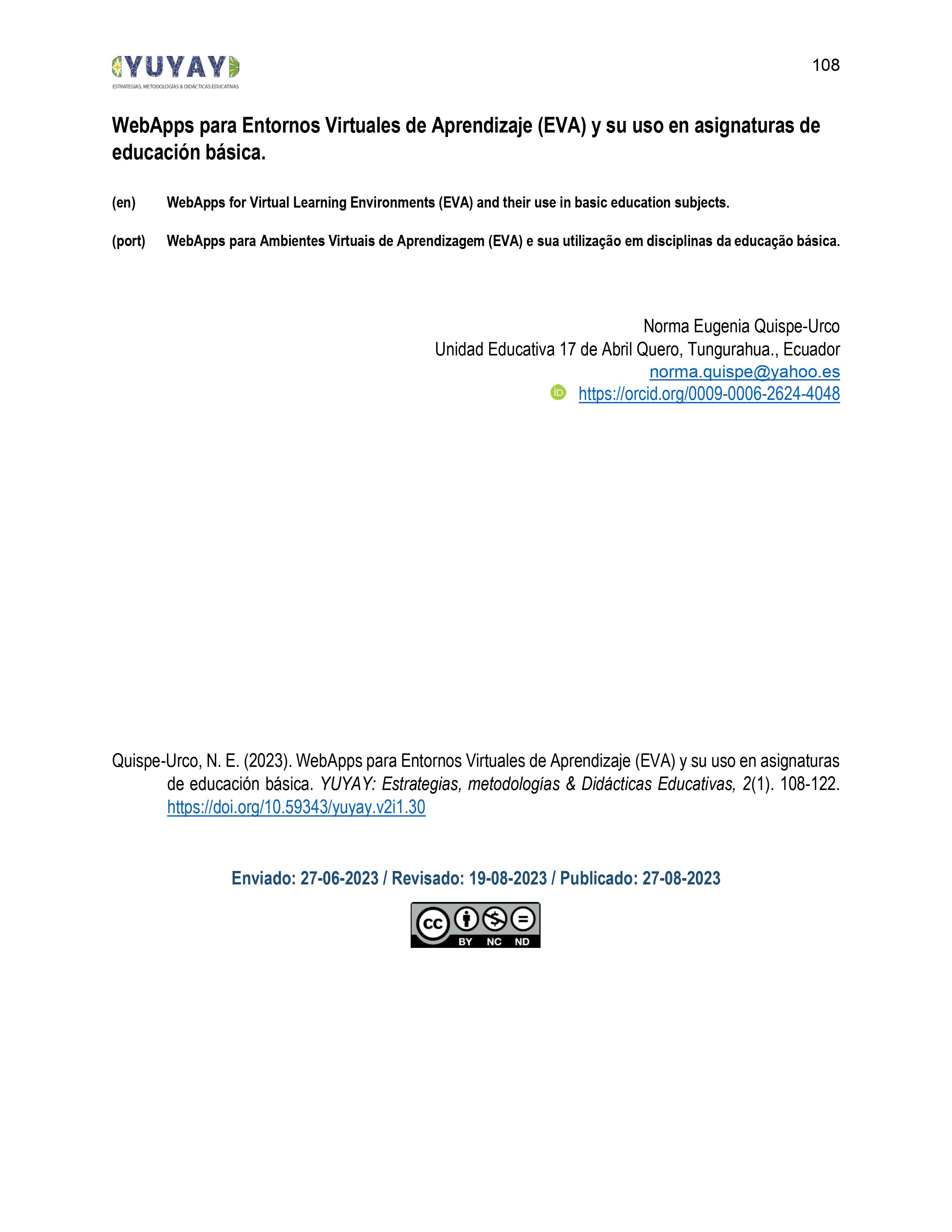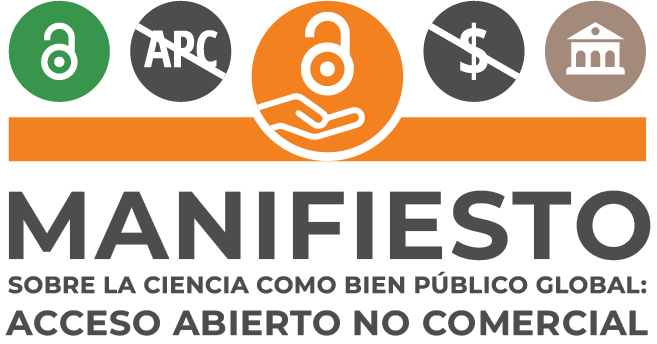WebApps for Virtual Learning Environments (EVA) and their use in basic education subjects.
DOI:
https://doi.org/10.59343/yuyay.v2i1.30Keywords:
Applications, methodologies, examples, Moodle, Microsoft Teams, Blackboard CollaborateAbstract
Throughout this document, the use of applications in virtual learning environments to improve the educational experience in basic education is addressed with examples in platforms such as Moodle, Microsoft Teams and Blackboard Collaborate. The benefits of using these tools, how teachers can implement them and what types of applications are recommended, understanding that they need a degree of scalability and flexibility for the student body, is posed as a research question. In addition, the specific criteria to evaluate the feasibility, reliability, viability and scope of an educational project in which resources are used in a Virtual Learning Environment (EVA) are mentioned, as well as the importance of following the declarative and institutional principles defined by the faculties of Education. The objective of the document has been to compile from the questioning, a series of examples that may be useful for the use of educational learning resources through the Innovation Techniques to be incorporated into the EVA.
Downloads
References
Arteaga, E. M. M., & Morán, C. R. T. (2022). Plataforma Teams para la enseñanza-aprendizaje en aulas domiciliarias. EPISTEME KOINONIA: Revista Electrónica de Ciencias de la Educación, Humanidades, Artes y Bellas Artes, 5(1), 313-339.
Barrera García, A., Peña Sklyar, I., & Peña Matos, M. (2016). Diseño e implementación de un Entorno Virtual de Aprendizaje (EVA) utilizando la plataforma educativa Moodle. Estudio de caso: asignatura Ergonomía. Universidad de Cienfuegos, Cuba. Revista Universidad y Sociedad, 8(2), 33-40.
Del Campo-Ponz, C., Chisvert-Tarazona, M. J., & Palomares-Montero, D. (2019). Percepción de una comunidad educativa sobre el desarrollo profesional docente en la educación 2.0. Profesorado, Revista de Currículum y Formación del Profesorado, 23(2), 421-439. https://doi.org/10.30827/profesorado.v23i2.9694
Elsamanoudy, A. Z., Al Fayz, F., & Hassanien, M. (2020). Adapting blackboard-collaborate ultra as an interactive online learning tool during the COVID-19 pandemic. Journal of Microscopy and Ultrastructure, 8(4), 213.
Herrera-Cubides, J. F., Gelvez-García, N. Y., & López-Sarmiento, D. A. (2019). LMS SaaS: Una alternativa para la formación virtual. Ingeniare. Revista chilena de ingeniería, 27(1), 164-179. http://dx.doi.org/10.4067/S0718-33052019000100164
Llorente, J. S., Giraldo, I. B., & Toro, S. M. (2016). Análisis del uso de las tecnologías TIC por parte de los docentes de las Instituciones educativas de la ciudad de Riohacha. Omnia, 22(2), 50-64.
Mosqueda, R. E., Venegas, R. R., & Maldonado, M. G. O. (2017). El uso de las TIC, TAC, TEP, para desarrollar competencias empresariales y comunicativas en los estudiantes universitarios. Tecsistecatl, (21).
Rosero, P. C. G. (2016). Utilización de Moodle en el proceso de enseñanza aprendizaje. Revista Científica Hallazgos21, 1(2).
Sardi, G. A. S., Coello, R. L. C., Santana, J. A. G., Palacios, Y. M. B., & Cevallos, F. A. M. (2021). Criterios sobre las tecnologías del aprendizaje y conocimiento (tac) en tiempo de pandemia covid-19: Criteria on learning and knowledge technologies (tac) in times of pandemic covid-19. South Florida Journal of Development, 2(2), 1809-1821. https://doi.org/10.46932/sfjdv2n2-053
Sigcho Abrigo, J. A. (2021). Estrategias de gamificación en el proceso de aprendizaje de estudiantes del nivel básico (Master's thesis, Quito: Universidad Tecnológica Indoamérica).

Published
How to Cite
Issue
Section
Categories
License
Copyright (c) 2023 Norma Eugenia Quispe-Urco

This work is licensed under a Creative Commons Attribution-NonCommercial-NoDerivatives 4.0 International License.
You are free to:
Share — copy and redistribute material in any medium or format.
- Licensor cannot revoke these freedoms if you follow the terms of the license.
Attribution — You must give credit appropriately, provide a link to the license, and indicate if any changes have been made. You may do so in any reasonable way, but not in a manner that suggests that you or your use are supported by the licensor.
NonCommercial — You may not use the material for commercial purposes.
NonDerivatives — If you remix, transform, or create from the material , you may not distribute the modified material.
No additional restrictions — You may not apply legal terms or technological measures that legally restrict others from making any use permitted by the license.






















